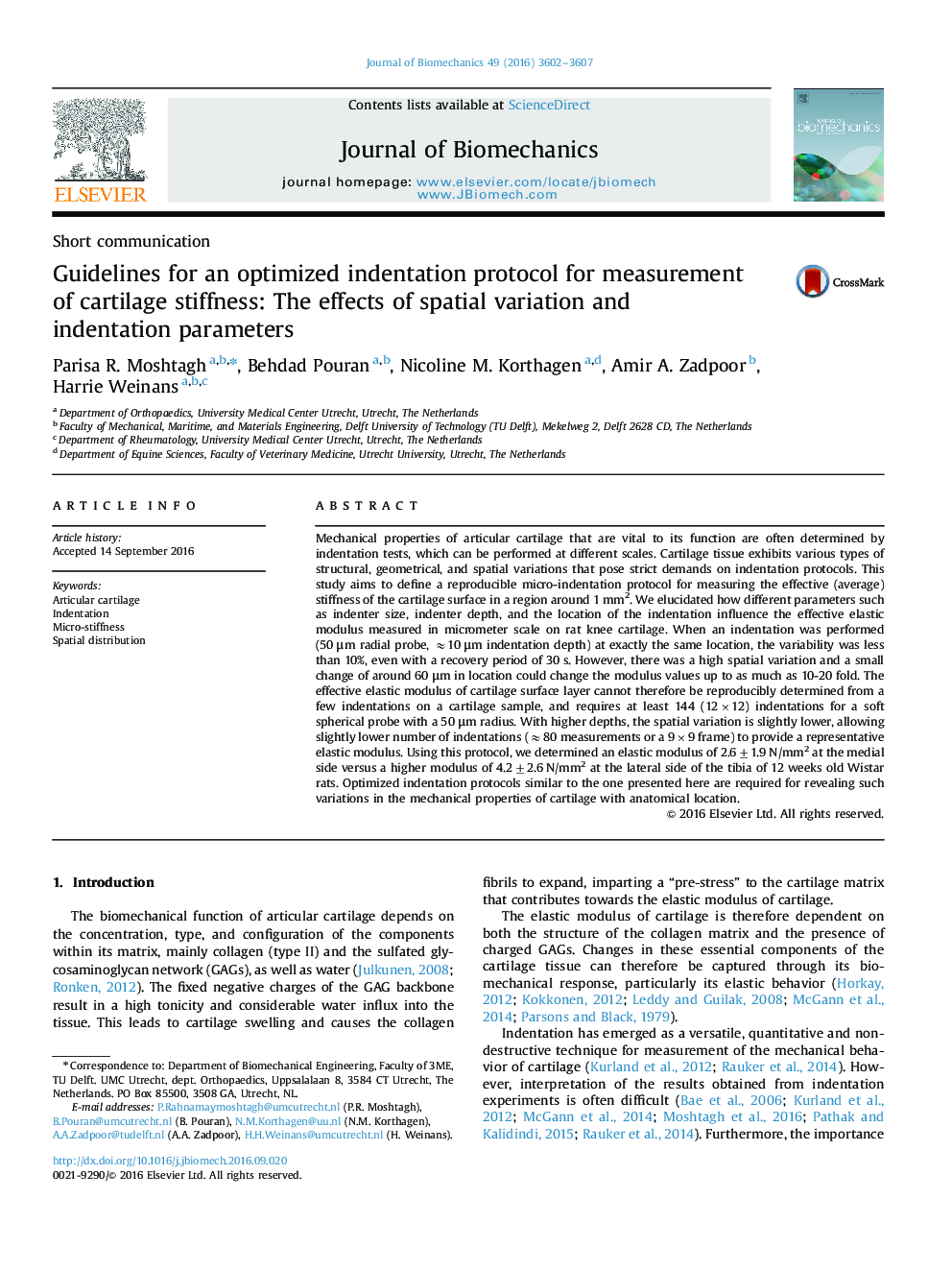| Article ID | Journal | Published Year | Pages | File Type |
|---|---|---|---|---|
| 5032579 | Journal of Biomechanics | 2016 | 6 Pages |
Mechanical properties of articular cartilage that are vital to its function are often determined by indentation tests, which can be performed at different scales. Cartilage tissue exhibits various types of structural, geometrical, and spatial variations that pose strict demands on indentation protocols. This study aims to define a reproducible micro-indentation protocol for measuring the effective (average) stiffness of the cartilage surface in a region around 1 mm2. We elucidated how different parameters such as indenter size, indenter depth, and the location of the indentation influence the effective elastic modulus measured in micrometer scale on rat knee cartilage. When an indentation was performed (50 μm radial probe, â10 μm indentation depth) at exactly the same location, the variability was less than 10%, even with a recovery period of 30 s. However, there was a high spatial variation and a small change of around 60 μm in location could change the modulus values up to as much as 10-20 fold. The effective elastic modulus of cartilage surface layer cannot therefore be reproducibly determined from a few indentations on a cartilage sample, and requires at least 144 (12Ã12) indentations for a soft spherical probe with a 50 μm radius. With higher depths, the spatial variation is slightly lower, allowing slightly lower number of indentations (â80 measurements or a 9Ã9 frame) to provide a representative elastic modulus. Using this protocol, we determined an elastic modulus of 2.6±1.9 N/mm2 at the medial side versus a higher modulus of 4.2±2.6 N/mm2 at the lateral side of the tibia of 12 weeks old Wistar rats. Optimized indentation protocols similar to the one presented here are required for revealing such variations in the mechanical properties of cartilage with anatomical location.
